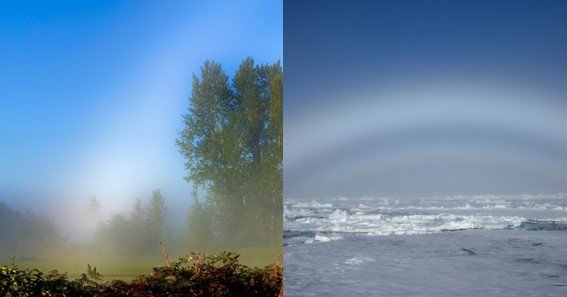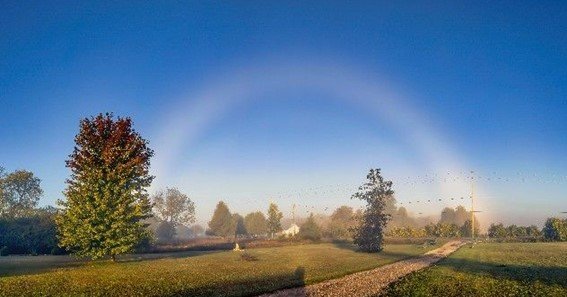Fogbows are one of nature’s most intriguing and elusive phenomena, often appearing as ghostly, white arcs in the sky. Unlike the vibrant, colorful rainbows we’re accustomed to, fogbows are subtle and ethereal, making them a rare sight for those who happen to be in the right place at the right time. But what causes a fogbow? Let’s explore the science behind these mysterious “white rainbows.”
What Causes a Fogbow?
A fogbow is caused by the diffraction, reflection, and refraction of sunlight (or moonlight) passing through the tiny water droplets in fog or mist. The process is similar to that which creates a regular rainbow, but the key difference lies in the size of the water droplets involved:
- Tiny Water Droplets: The water droplets in fog are much smaller than raindrops, typically less than 0.05 millimeters in diameter. These droplets are so small that they do not refract light in the same way larger raindrops do. Instead of splitting the light into a full spectrum of colors, the small droplets cause the light to spread out more evenly, creating a broad, white arc
- Diffraction: Diffraction occurs when light waves bend around the edges of these tiny droplets. This bending spreads out the light, and because the droplets are uniformly small, the light remains mostly white instead of separating into distinct colors. This is why fogbows appear as white or very faintly colored arcs(
- Low Sun Position: Fogbows are most commonly seen when the sun is low in the sky, such as early morning or late afternoon. The low angle of the sun’s rays enhances the visibility of the fogbow, making it appear larger and more distinct against the foggy backdrop.

FAQ
What causes a fogbow?
A fogbow is caused by the interaction of sunlight with tiny water droplets in fog, leading to diffraction and the creation of a white or faintly colored arc.
How is a fogbow different from a rainbow?
Unlike rainbows, which are formed by larger raindrops and display vibrant colors, fogbows are created by much smaller droplets, resulting in a pale, white arc due to diffraction.
Where can you see a fogbow?
Fogbows are often seen in foggy or misty conditions, especially in coastal areas, over lakes, or in mountainous regions where fog is prevalent.
Why is a fogbow white?
The tiny size of the water droplets causes light to spread out evenly rather than separating into colors, leading to the fogbow’s characteristic white appearance.
Are fogbows rare?
While not as common as rainbows, fogbows can be seen under the right conditions, particularly in areas where fog is frequent. Their subtle appearance makes them easy to miss.










